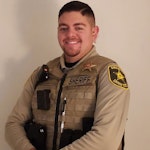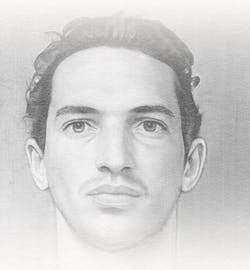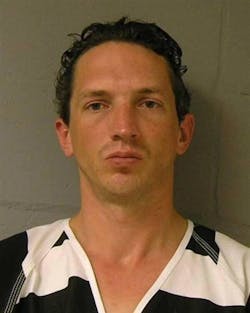How to Catch A Criminal: A Traveling Killer's Untold Horrors (Part 1)
I bring you this column out of my pure fascination with police work, cold cases, forensics, interrogation, and all things criminal and mysterious. As an active-duty police officer, I hold an interest in all cases especially those that bring justice to light in the end. The purpose of this column is to tell the story of cases which were solved by technological advancements, unconventional tactics, dumb luck, and any other manner outside the norm. I hope you find these cases as intriguing and motivating as I do. This month, a confident murderer who was careful to never leave a trace, until he became too bold.
This article appeared in the September issue of OFFICER Magazine. Click Here to view the digital edition. Click Here to subscribe to OFFICER Magazine.
What’s worse than the Devil you know? The Devil you don’t know. Worse than that? The Devil you know, but know you don’t really know. Throughout history, when a killer is caught and convicted, it is because their crimes become known. Evidence has been collected, witnesses have testified, confessions have been made, all the standards of a proper investigation. At times when you don’t have one of these standards, you must rely on the strength of the others to convince a jury. If the suspect won’t talk, you need to collect all of the evidence you can possibly get. If there is a lack of physical evidence, you need to identify as many witnesses as possible to recount the events in court. The toughest cases, of course, are those missing several standards. If the killer hasn’t left behind any evidence, and no one witnessed the crime, the only person who knows what happened is the killer themselves. It is up to the investigators to “play the game” so to speak, and draw out a confession, or at least as much information as possible.On the evening of Feb. 1, 2012, 18-year-old Samantha Koening was finishing her shift at the Common Grounds coffee stand in Anchorage, Alaska. A vehicle entered the parking lot around 8 p.m., and what should have been a simple transaction became her worst nightmare. Security footage showed a man exit the vehicle and approach the coffee stand. The man wore a ski mask as he ordered his coffee. While this was peculiar, it was not necessarily unheard of for wintertime Alaska, where freezing temperatures and scarce sunlight are the norm. The man received his coffee, but pulled a gun on Koenig. He demanded she hand over the money from the register, which he received before climbing inside the coffee stand. Samantha Koening’s hands were bound with cable ties and she was forced outside, into the Ford Focus. The next time Samantha Koenig would be seen would be in a photo demanding a ransom for her safe return.
Samantha’s boyfriend was preparing to pick her up from work when he received a text from her phone, saying she was going to be out of town for a while. He drove to her work and discovered she was indeed not there. He drove to Samantha’s home, unsure of what to think about this strange turn of events. When he returned to his truck he saw a man burglarizing his vehicle. He ran inside for help, but the man was quickly gone. It was later discovered that Samantha’s ATM card had been stolen from the truck. On Feb. 2, Samantha was officially reported as missing, though the initial belief was that she was a runaway, not a victim of abduction. Once the security footage was reviewed, however, local law enforcement and the FBI launched a full-blown kidnapping investigation, hoping for the safe return of Samantha Koenig.
On Feb. 24, another text message came through from Samantha’s phone. It instructed her boyfriend to go to Connor’s Lake Park and look under a flyer for a lost dog. It was there that he found a photo of Samantha, next to a recent newspaper, with a note demanding $30,000 be deposited into Samantha’s bank account. Koenig’s parents, desperate to see their daughter again after 23 days of worrying, deposited $5,000 into her account before alerting authorities of the ransom demand. Once investigators were informed of the transaction they began tracking Samantha’s debit card. Withdraws were made between March 1 and March 10 first in Anchorage, then Wilcox, Arizona; Lordsburg, New Mexico; Shepherd, Texas and Humble, Texas. With each use of the card, FBI Agents were able to obtain footage from the ATMs. The video showed a white Ford Focus driven by a male, often with his face obscured or not visible on camera. Texas law enforcement were asked to be on the lookout for the vehicle traveling through the state
On March 13, 2012, Texas Highway Patrol Corporal Bryan Henry spotted a white Ford Focus driven by a male in Lufkin, Texas. The vehicle needed to be stopped and the driver identified just in case this was Samantha Koenig’s kidnapper, but it isn’t exactly reasonable to stop every white Focus driving on a Texas highway without any other descriptors, unless there is probable cause. Luckily for Corporal Henry, this particular Focus was driving a whopping 3 mph over the speed limit. Henry initiated a traffic stop on the speeding vehicle and spoke with the driver. When asked where he was from, the driver said he hailed from Anchorage, Alaska. This egregious speeding offense would prove to be not only a major break in the Koenig case, but many others as well.
The driver of the Focus was identified as Israel Keyes. Texas Rangers quickly responded to the stop and determined under Texas laws, there was probable cause to search Keyes vehicle. Upon conducting the search, they located a gun, and a ski mask, as well as Samantha Koenig’s cellphone and ATM card. Keyes was questioned about the ATM card, but declined to answer questions. After communicating their findings to investigators working the case in Anchorage, Keyes was arrested. Anchorage Police Detectives Monique Doll and Jeff Bell flew to Texas to question Israel, but he insisted he knew nothing of Samantha Koening or her disappearance, and her phone and bank card must have been slipped into his car through the window, which he leaves cracked to air out his cigar smoke. Keyes was extradited to Alaska for bank fraud, but the question of Samantha Koening’s whereabouts remained
Check next month's issue for the case conclusion.
This article appeared in the September issue of OFFICER Magazine.

Officer Brendan Rodela, Contributing Editor | Officer
Brendan Rodela is a Deputy for the Lincoln County (NM) Sheriff's Office. He holds a degree in Criminal Justice and is a certified instructor with specialized training in Domestic Violence and Interactions with Persons with Mental Impairments.




